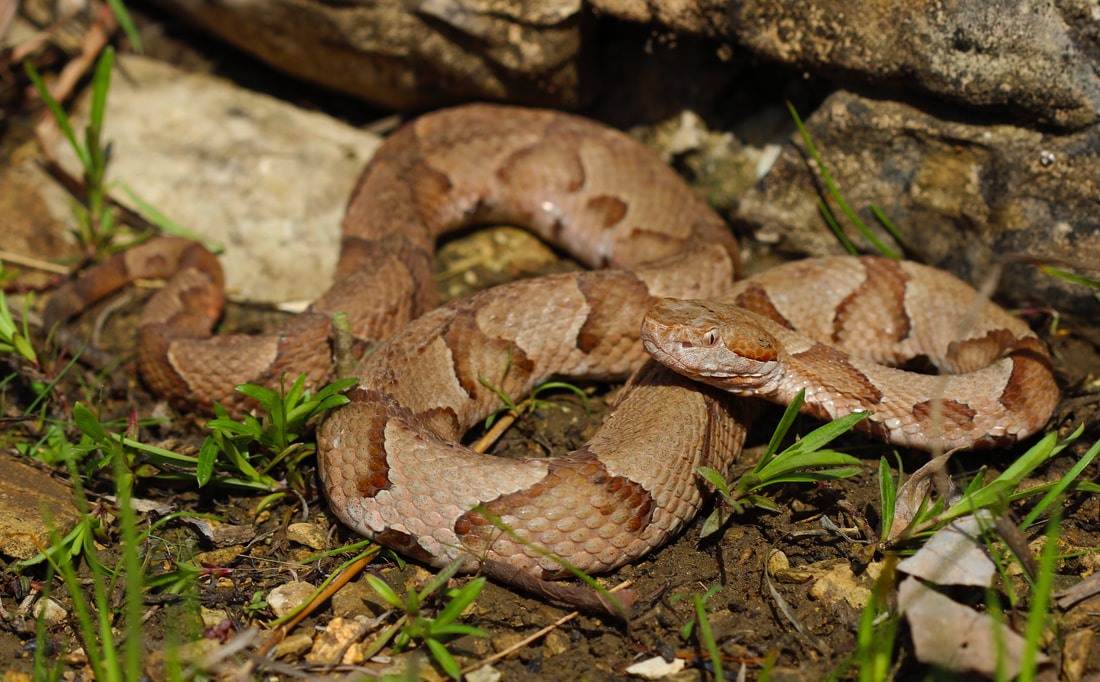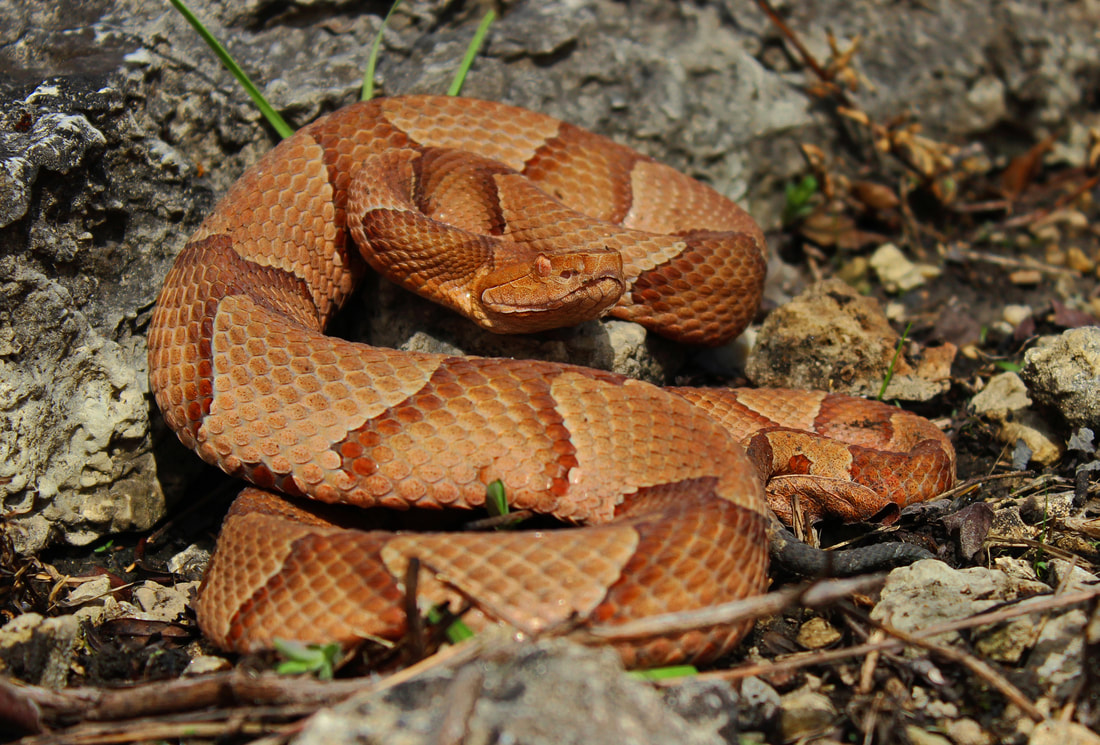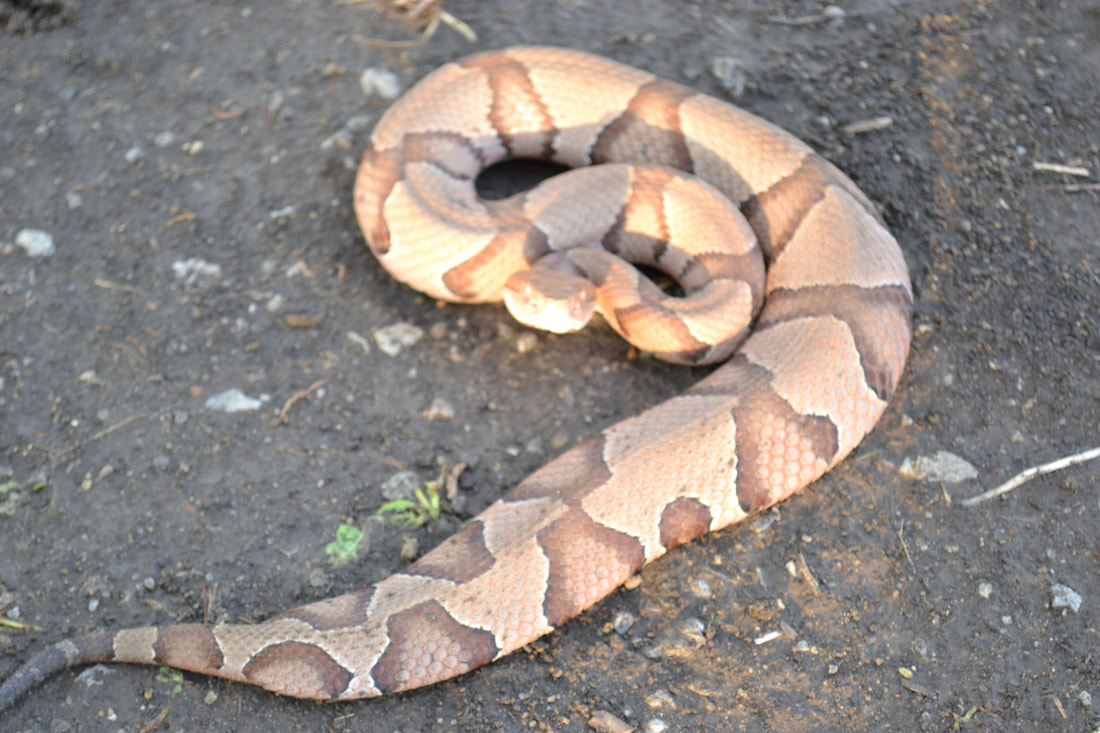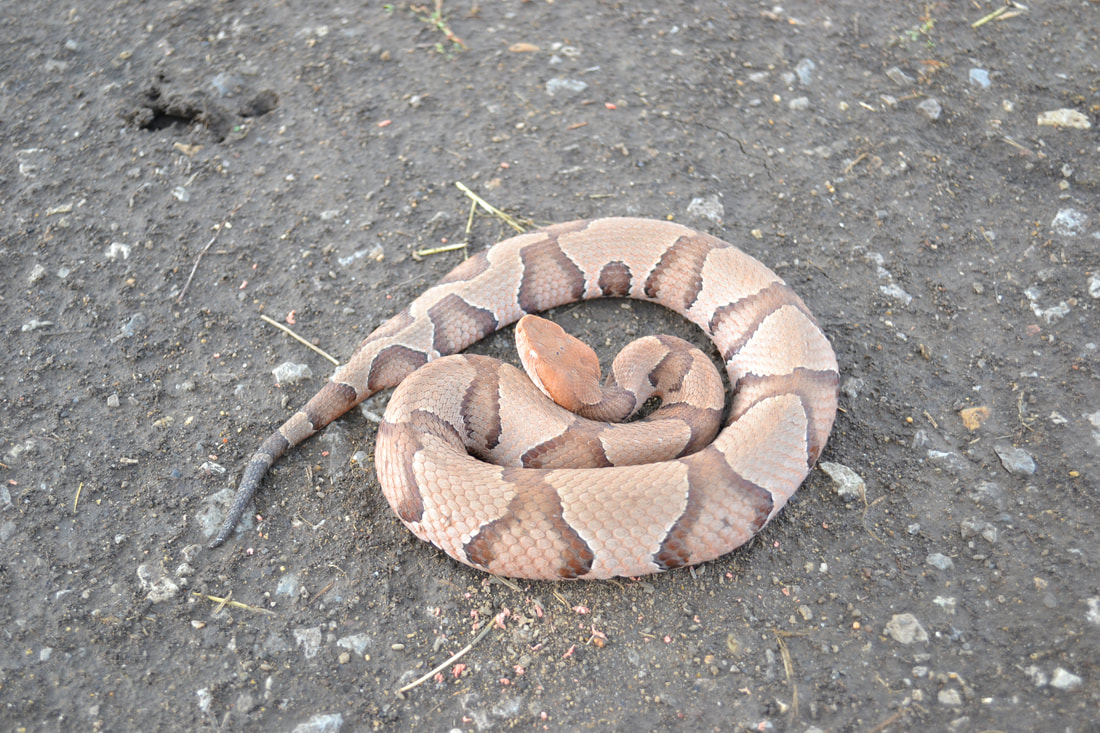OSAGE COPPERHEAD
Agkistrodon contortrix phaeogaster
Venomous
This is a subspecies of the Eastern Copperhead (Agkistrodon contortrix) The Osage copperhead is found in the northern two-thirds of the state.
Color varies from grayish brown to pinkish-tan, with hourglass-shaped crossbands of dark gray, brown, or reddish-brown. The head may have some pink or orange color, hence the name “copperhead.” The tail may be yellow or greenish yellow, especially in young specimens, and the belly usually is a dusky mixture of gray, tan, and black. This camouflage pattern blends in perfectly with fallen leaf debris on the ground.
Adult lengths are 24 to 36 inches (2–3 feet).
Copperheads live on rocky hillsides and along forest edges. They also spend time among trees and brush along prairie streams and are often found near abandoned farm buildings. Copperheads feed on mice, lizards, frogs, small birds, insects (especially cicadas), and sometimes small snakes.
Copperhead venom is considered mild compared to that of other venomous snakes, but medical treatment should still be sought if a person is bitten.
This is a subspecies of the Eastern Copperhead (Agkistrodon contortrix) The Osage copperhead is found in the northern two-thirds of the state.
Color varies from grayish brown to pinkish-tan, with hourglass-shaped crossbands of dark gray, brown, or reddish-brown. The head may have some pink or orange color, hence the name “copperhead.” The tail may be yellow or greenish yellow, especially in young specimens, and the belly usually is a dusky mixture of gray, tan, and black. This camouflage pattern blends in perfectly with fallen leaf debris on the ground.
Adult lengths are 24 to 36 inches (2–3 feet).
Copperheads live on rocky hillsides and along forest edges. They also spend time among trees and brush along prairie streams and are often found near abandoned farm buildings. Copperheads feed on mice, lizards, frogs, small birds, insects (especially cicadas), and sometimes small snakes.
Copperhead venom is considered mild compared to that of other venomous snakes, but medical treatment should still be sought if a person is bitten.
Above photos by Pater Paplanus






